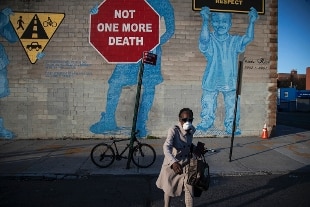- Coronavirus in the world. Johns Hopkins: over 600,000 cases. First passenger trains arrived in Wuhan
- Coronavirus. The arms lobby is turning to justice in California: armories remain open
Share
March 28, 2020 If the growth rate of coronavirus cases in the New York metropolitan area continues, the Big Apple will be a more severe outbreak than those in Wuhan, China or the Lombardy region of Italy. It is the alarm that launches the New York Times based on trends of contagion progression. "Of course there is no guarantee that current trends will continue. What has happened so far cannot be used to predict what will happen in the future. It is possible that social distancing may slow down or stop the growth of cases soon," the newspaper said. New York. "But what can be said - he continues - is that the New York metropolitan area has had less success in flattening the curve, at this point of the epidemic, than in Wuhan or the Lombardy region at the same point as theirs. And some other American metropolitan areas seem to be following a similar path. ""In the early stages of an outbreak, the size of the population does not matter: an infected person will probably infect some people, regardless of whether they live in a metropolitan area of 100,000 inhabitants or one of 10 million. But with the progress of an epidemic, the number of cases per capita can provide a good measure of the prevalence of coronavirus in a community. "
"The per capita measurements - it still reads in the US newspaper - also give an idea of how tense the health system of a community has become, since larger places tend to have more health resources".
The NYT tables include numbers from Lombardy and Wuhan to provide a reference point for metropolitan areas in the United States. The comparisons are illustrative, but not exact. The outbreaks of the two outbreaks, the newspaper points out, continue longer, which means that their case numbers are spread over more time. In most of the United States, cases have only come from the past month. To assess the possible future of the epidemic, not only the number of cases are examined, but also the rate at which they increase. New York's current growth rate is just over 30%, which suggests that its curve remains rather steep and that the disease continues to spread rapidly throughout the region. In other places, such as Baton Rouge, Los Angeles, the growth rate is high, but the number of cases is still low. This means that the community may still have time to flatten its curve before the epidemic spreads. But communities with many cases and high growth rates are well on their way to having a serious problem. A high growth rate in addition to a large number of cases means that even more people are well on their way to getting infected.

